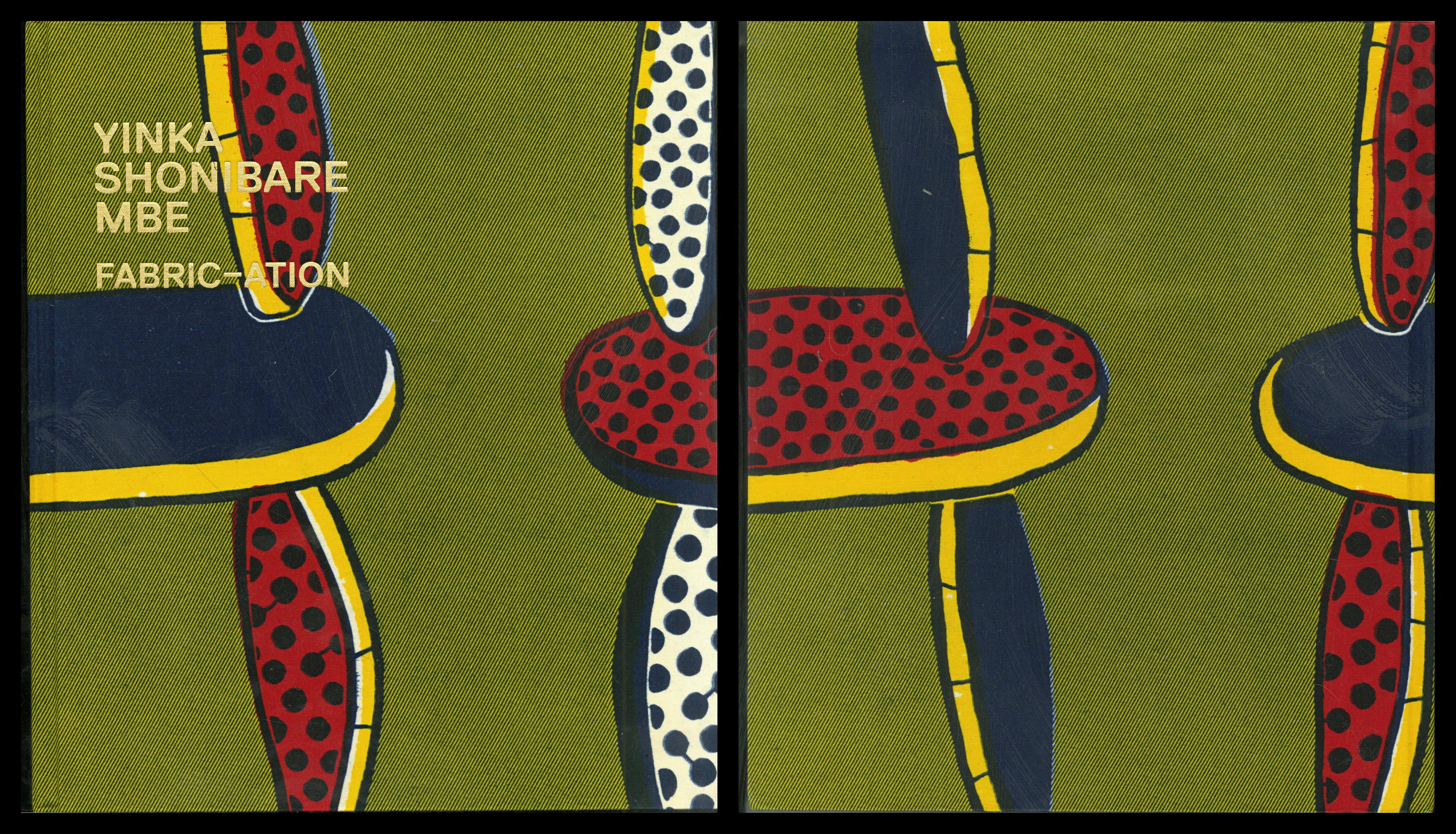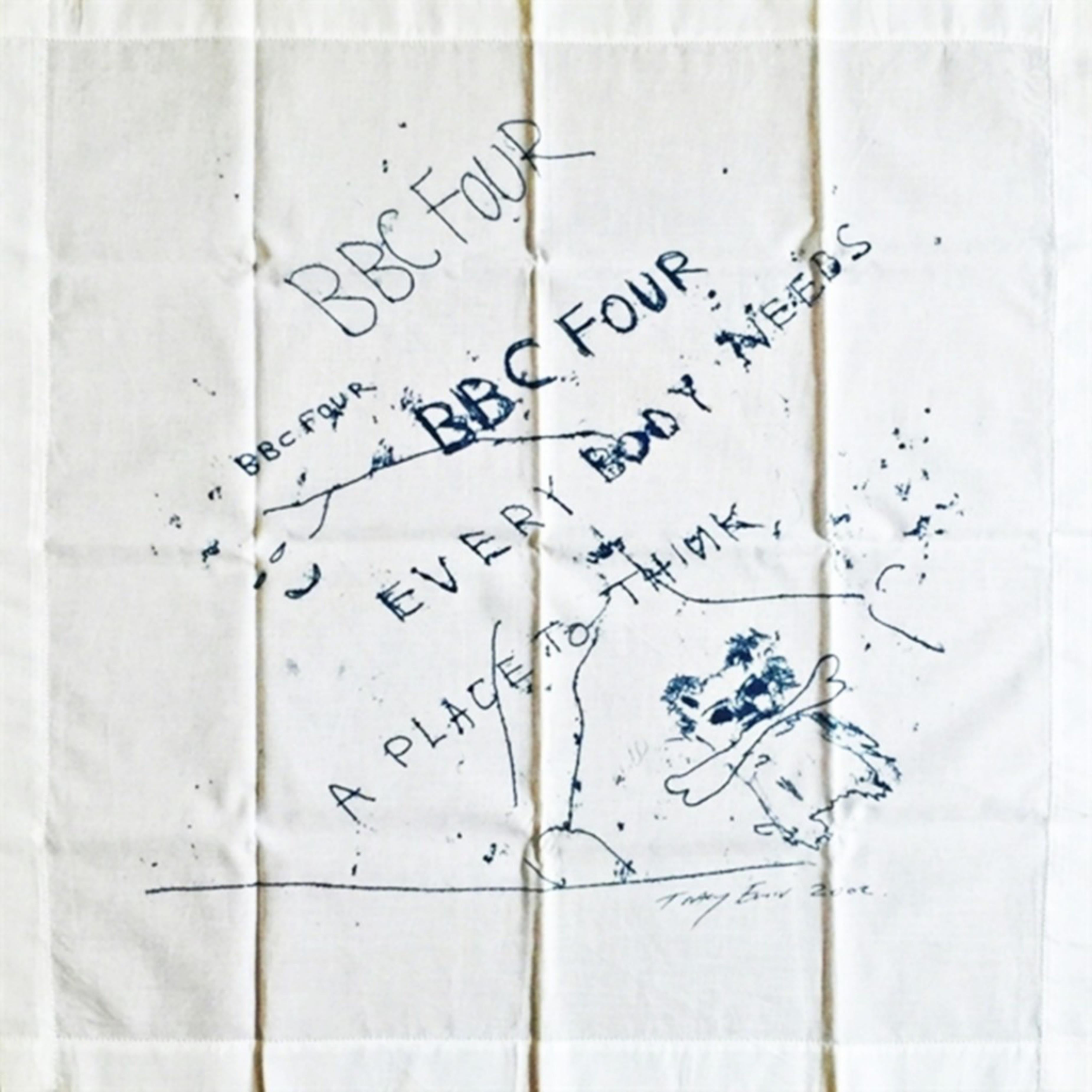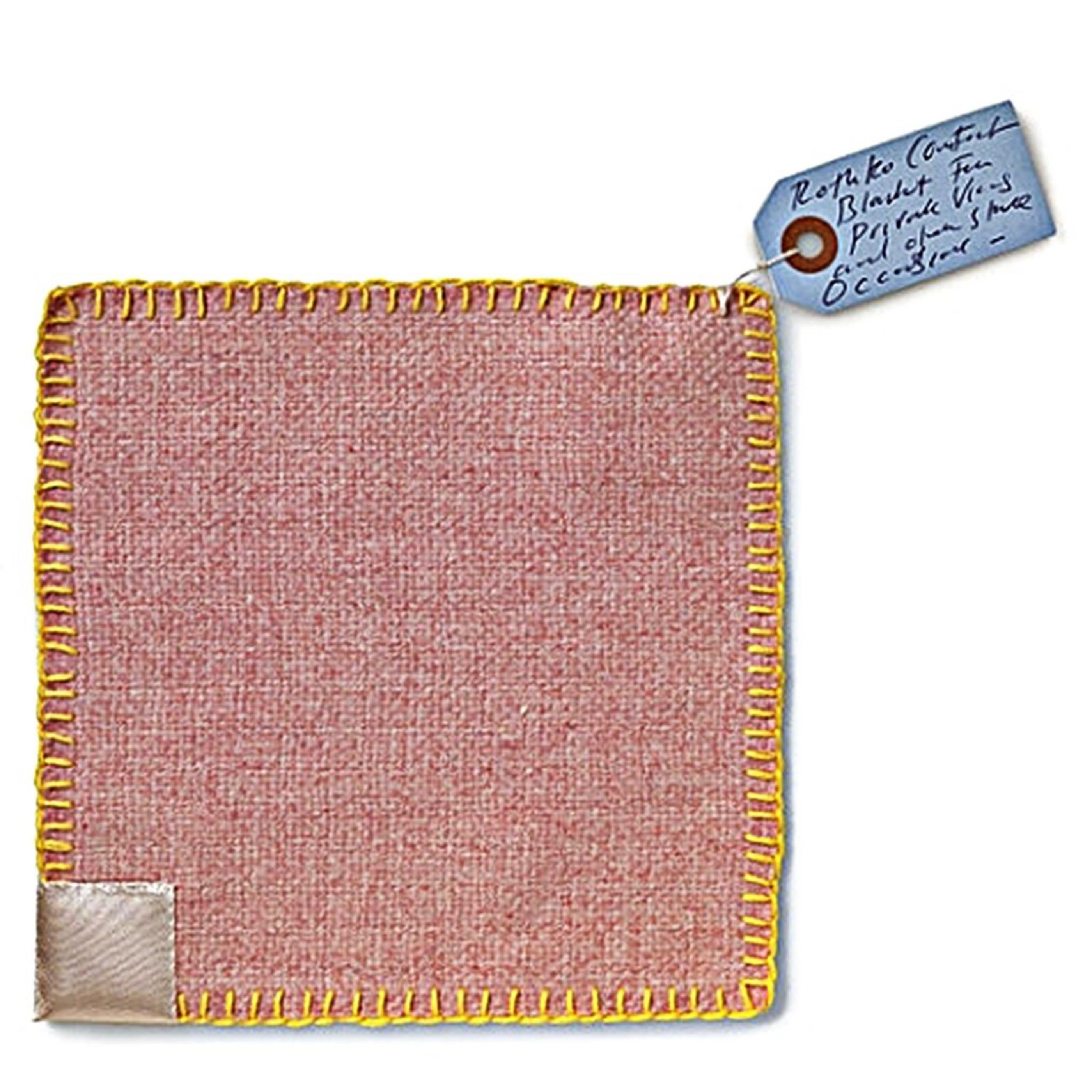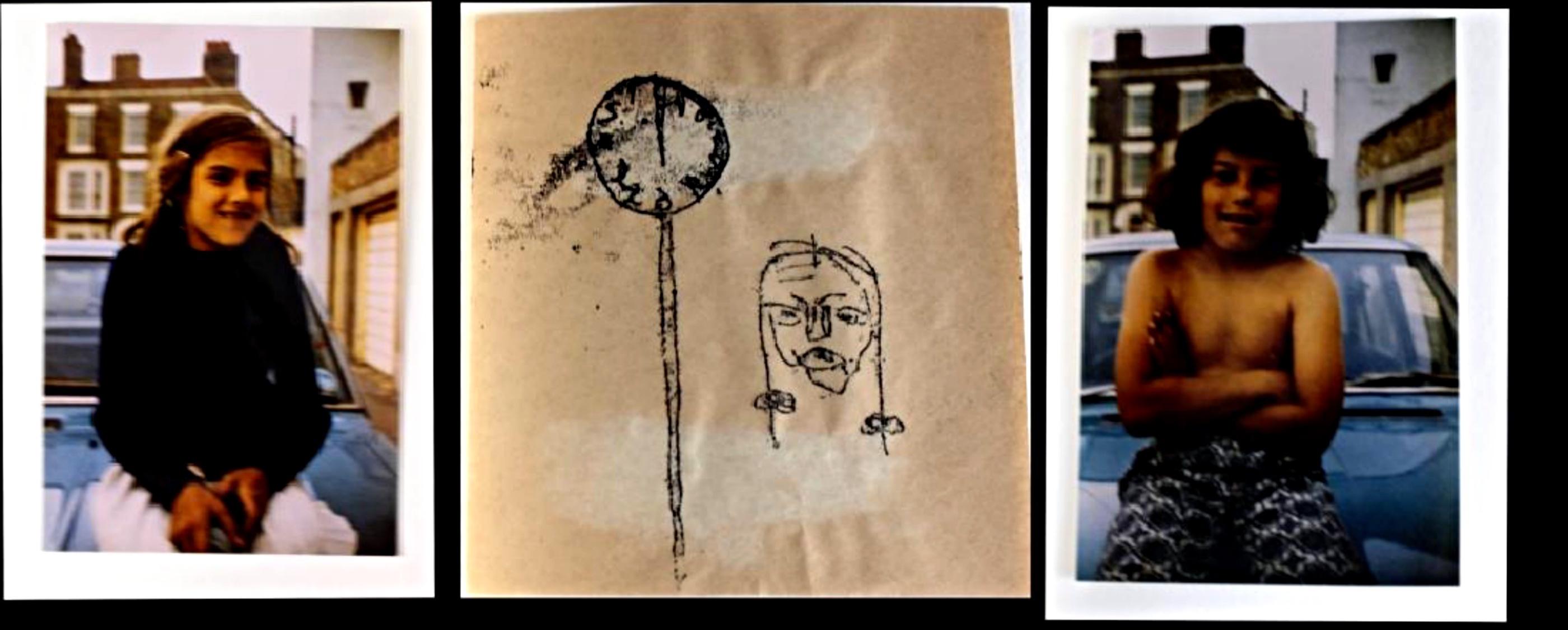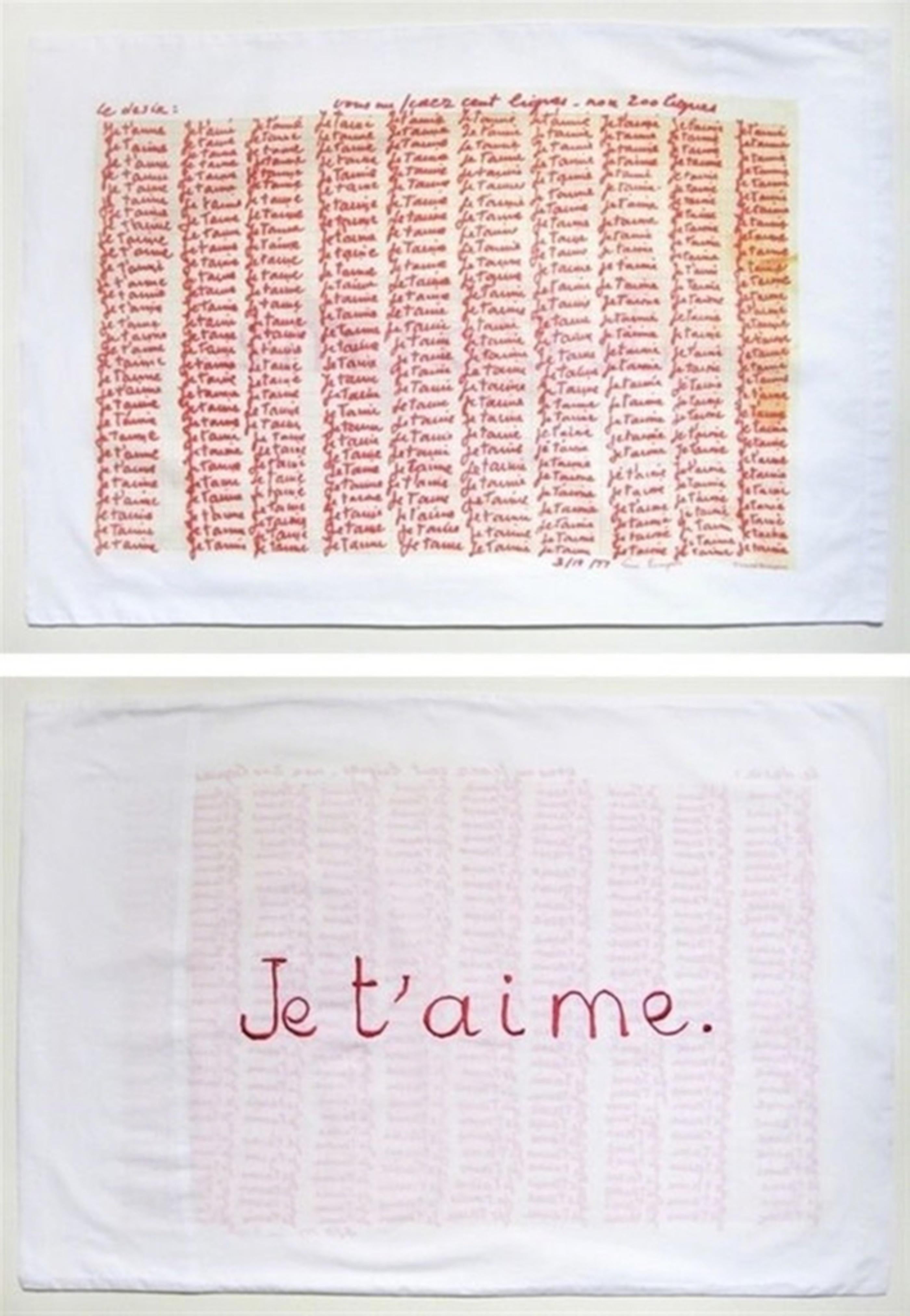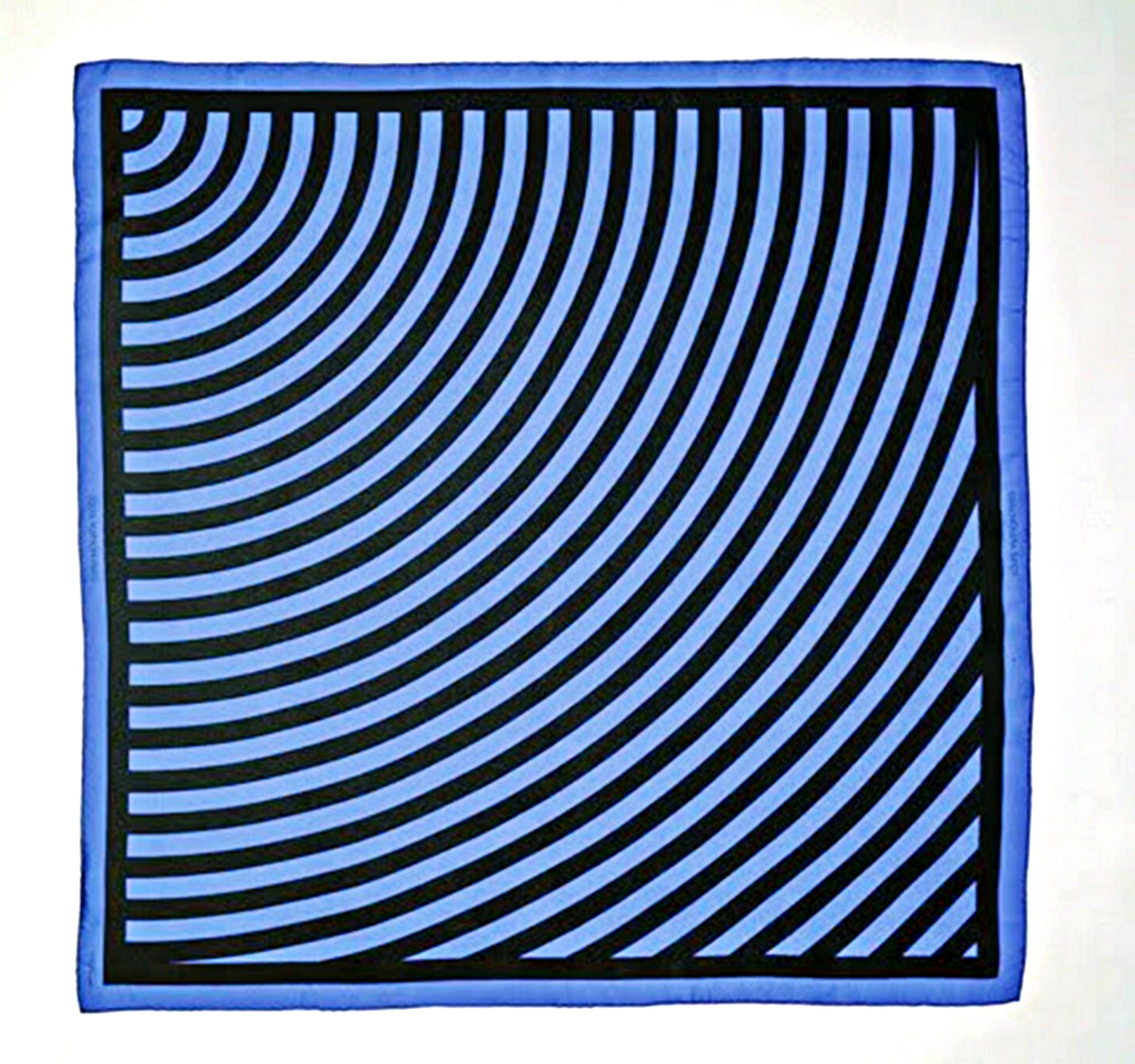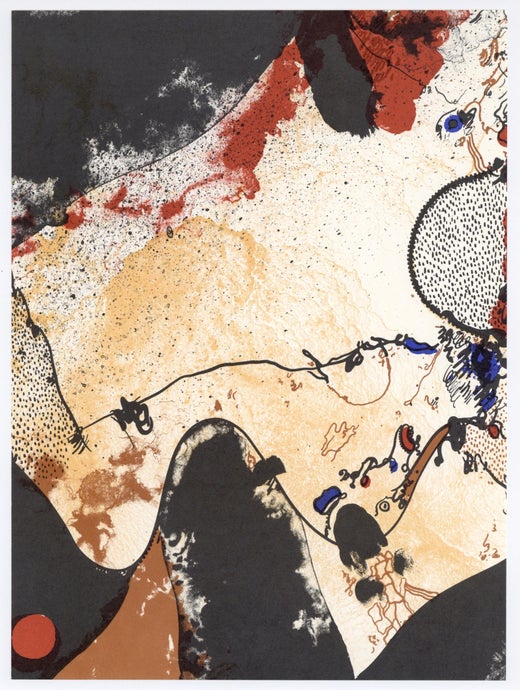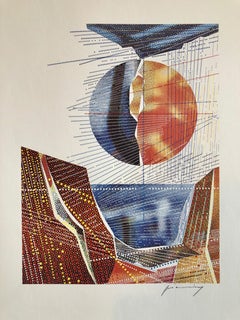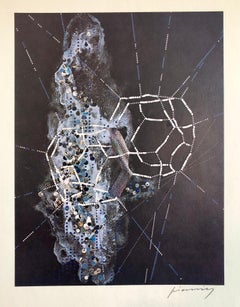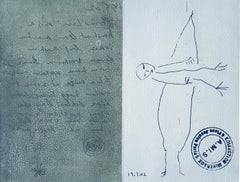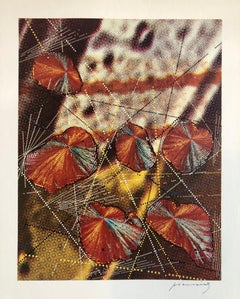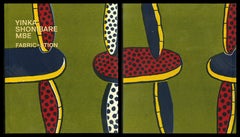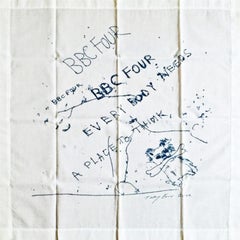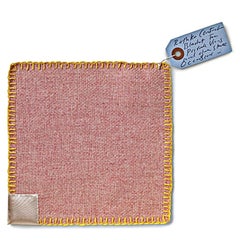Items Similar to Bold Abstract Latin American Screenprint Scarf Textile Art Print Josep Guinovart
Want more images or videos?
Request additional images or videos from the seller
1 of 14
Josep Guinovart BertránBold Abstract Latin American Screenprint Scarf Textile Art Print Josep Guinovart
About the Item
This is a thin cotton (that is my best estimate. it does not feel like silk) scarf, woven textile, fabric piece. It is signed in the print and hand numbered.
Josep Guinovart (1927 –2007) was a Spanish Catalan painter most famous for his informalist or abstract expressionist work.
In 1941, he began to work as a decorator. Three years later, he started his studies at the Escuela de Artes y Oficios de la Llotja (Art School of La Llotja) where he stayed until 1946.
He first exhibited his work in 1948 in Galerías Syla in Barcelona. In 1951, he produced his first engravings entitled 'Homage to Federico García Lorca'. Two years later, he was awarded a grant from the French Institute to study in Paris for nine months. Here he discovered the cubist works of Henri Matisse and Pablo Picasso and travelled to Belgium, Holland and Germany.
On his return to Barcelona and after a period working as an illustrator and set designer, around 1957 he began moving towards abstract art. His work is highly unconventional and usually on a large scale, using a wide range of materials, three-dimensional objects and organic substances such as eggshell, earth and straw. He has done some amazing 3D wool tapestry wall hangings.
In 1962, he illustrated a book of poetry entitled Posies by Joan Salvat-Papasseit for the Ariel Editorial. He won many accolades for his work throughout the 1970s and 80s, including Spain's National Award for Plastic Arts in 1982. In 1994, a museum foundation dedicated to his art was inaugurated in Agramunt, his mother's birthplace to which he always felt a special attachment.
In 2006 he designed the winery Mas Blanch i Jové in La Pobla de Cérvoles (Lleida) and created The Artists' Vineyard, a project intended to mix sculptures and other art works from different artists in the middle of a vineyard. The Artists' Vineyard was inaugurated after his death in 2010 with the unveiling of his sculpture The Countryside Organ: a music instrument, 6 meters height, for the wind to sing the vines. This winery also displays the 10.5 meters work In Vino Veritas and other artists' works. He is buried in the Sant Gervasi Cemetery, Barcelona.
He was represented by the prestigious Joan Prats Gallery ( they showed Salvador Dali, Alexander Calder, Paul Klee, Max Ernst, Josep Vicenç Foix and Joan Brossa) and he was included in the exhibition Five Catalan Artists in Homage to Joan Prats. Joan Miro, Antoni Tapies, Josep Guinovart, Joan Hernandez Pijuan, Albert Rafols Casamada.
Museums and public collections with his artwork
Espai Guinovart, Agramunt, Catalonia - museum dedicated entirely to his artwork.
MACBA (Barcelona Contemporary Art Museum), Barcelona.
CaixaForum, Colección Fundación "La Caixa", Barcelona.
Museo Nacional Centro de Arte Reina Sofía, Madrid.
The Guggenheim, New York City.
Casa de las Américas, La Habana.
Fine Arts Museum of Long Island, New York City.
Museo de Arte Moderno, Mexico City (México DF).
Museo de Escultura al Aire Libre, Santa Cruz de Tenerife.
Museo de Navarra, Tafalla.
Museo Provincial de Vitoria-Gasteiz, the Basque Country.
Museo de la Solidaridad Salvador Allende, Santiago de Chile.
Museum of Fine Arts, Alexandria, Egypt.
Museu d'Art Modern, Barcelona.
Biblioteca Museu Víctor Balaguer, Vilanova i la Geltrú, Catalonia.
Bilbao Fine Arts Museum, Bilbao, the Basque Country.
Museo de Lissone, Milano.
Museu de Pintura de Sant Pol de Mar, Catalonia.
Museo de Maracay, Venezuela.
Museo de Arte Contemporáneo, Caracas, Venezuela.
Museo Carrillo Gil, Mexico.
Museo de San Telmo, Donostia/San Sebastián.
Kunstmuseum Bochum, Germany.
Palacio de Justicia de Vitoria-Gasteiz, Áraba.
Colección Patrimonio Nacional, Madrid.
Fundación Juan March, Palma (Mallorca).
Generalitat de Catalunya Collection, Barcelona.
The Chase Manhattan Bank Collection, New York.
Caja de Ahorros de la Inmaculada Collection, Saragossa.
Diari Avui (newspaper) collection, Barcelona.
Eina Art & Design School Collection, Barcelona.
Ajuntament de Barcelona / Barcelona City Council Collection.
Museo de Arte Contemporáneo, Madrid.
Museo de Arte Contemporáneo de Cáceres.
Museu d'Art Contemporani de Vilafamés, Castelló de la Plana.
Museu Eusebio Sempere, Alacant.
- Creator:Josep Guinovart Bertrán (1927 - 2007, Spanish)
- Dimensions:Height: 31 in (78.74 cm)Width: 28 in (71.12 cm)Depth: 1.75 in (4.45 cm)
- Medium:
- Movement & Style:
- Period:
- Condition:good. minor wear commensurate with age. minor wrinkling. please see photos.
- Gallery Location:Surfside, FL
- Reference Number:1stDibs: LU3829819452
Josep Guinovart Bertrán
Josep Guinovart (Barcelona, 1927 - 2007) began working as a painter of murals, posters, and theater decoration and also as the illustrator of the Dau al Set group's magazine. In 1955, after completing his studies in Paris, thanks to a scholarship given to him by the French Institute, Guinovart founded the group Tahull, along with Antoni Tàpies, Jaume Muxart, Modest Cuixart and Joan Josep Tharrats. He begins a figurative stage that evolves to a social theme and then to abstraction and informalism. In 1957 Guinovart began to experiment in a style close to assemblage and collage by incorporating into his works objects as boxes, cans, burnt wood or trashed elements. In the 60's he leaves subjective poetry of informalism and his works are characterized by the expressive content that he tries to convey by signs and colorful strokes. From 1970 incorporates materials like mud, straw or cement and also makes some works of social and political content. Examples of works from these years are "Earth and Stubble" (1976) or "Stone & Clay" (1977). In 1976 he began his work as an engraver. In 1982 he received the National Prize of Fine Arts granted by the Spanish government and in 1990 the National d'Arts Plastiques Prize awarded by the Department of Culture of the Generalitat of Catalonia. His art works are shown in major museums including Museum of Modern Art in Barcelona, New York's Guggenheim Museum, Museo Nacional Centro de Arte Reina Sofia in Madrid, Museo de Bellas Artes de Bilbao and the Fine Arts Museum of Long Island in New York.
About the Seller
4.9
Platinum Seller
Premium sellers with a 4.7+ rating and 24-hour response times
Established in 1995
1stDibs seller since 2014
1,743 sales on 1stDibs
Typical response time: 2 hours
- ShippingRetrieving quote...Shipping from: Surfside, FL
- Return Policy
Authenticity Guarantee
In the unlikely event there’s an issue with an item’s authenticity, contact us within 1 year for a full refund. DetailsMoney-Back Guarantee
If your item is not as described, is damaged in transit, or does not arrive, contact us within 7 days for a full refund. Details24-Hour Cancellation
You have a 24-hour grace period in which to reconsider your purchase, with no questions asked.Vetted Professional Sellers
Our world-class sellers must adhere to strict standards for service and quality, maintaining the integrity of our listings.Price-Match Guarantee
If you find that a seller listed the same item for a lower price elsewhere, we’ll match it.Trusted Global Delivery
Our best-in-class carrier network provides specialized shipping options worldwide, including custom delivery.More From This Seller
View AllPencil Signed Abstract Geometric Graphic Design Lithograph Print, Bauhaus Artist
By M. Peter Piening
Located in Surfside, FL
M. Peter Piening was born on March 14, 1908 in Grabow, Germany. He began his education at a private school in Italy, studied at the Jesuit school of Kloster Ettal in Bavaria, and attended the German Stettin Gymnasium, where he graduated in 1926. Between 1926 and 1928 Piening studied design at the Bauhaus in Dessau, Germany. There he was taught by multiple famous twentieth-century artists, including Joseph Albers, Paul Klee and Mies van der Rohe. After receiving his master’s degree from the Bauhaus in 1929, Piening enrolled at the University of Berlin and obtained his PhD in philosophy in 1931.
Piening spent his early career free-lancing as an illustrator and artist for various publishing companies, eventually settling in Paris to work for Condé-Nast’s French publication of Vogue. In 1934 he moved to the United States to work in Condé-Nast’s New York City office. For the next two decades, Piening worked for many important advertising agencies and magazine publishers, including the N. W. Ayer and J. Walker Thompson agencies and Life and Fortune magazines. As art director for Life in the 1930s and for Fortune in the 1940s, Piening completely redesigned the layout of each magazine. He also redesigned the layouts for thirty-four other major American magazines, including Town & Country and Cosmopolitan.
Through his design work, Piening had a great impact on the American public, although the millions who encountered his work most likely never knew his name. Between 1934 and 1964, Piening designed over sixty logos and trademarks for internationally-known products and companies. His most widely-recognized logo may have been the three interlocking rings of Ballantine beer. Piening’s other trademark designs include the Lincoln Zephyr...
Category
1960s Abstract Geometric Abstract Prints
Materials
Lithograph
Pencil Signed Abstract Geometric Graphic Design Lithograph Print, Bauhaus Artist
By M. Peter Piening
Located in Surfside, FL
M. Peter Piening was born on March 14, 1908 in Grabow, Germany. He began his education at a private school in Italy, studied at the Jesuit school of Kloster Ettal in Bavaria, and attended the German Stettin Gymnasium, where he graduated in 1926. Between 1926 and 1928 Piening studied design at the Bauhaus in Dessau, Germany. There he was taught by multiple famous twentieth-century artists, including Joseph Albers, Paul Klee and Mies van der Rohe. After receiving his master’s degree from the Bauhaus in 1929, Piening enrolled at the University of Berlin and obtained his PhD in philosophy in 1931.
Piening spent his early career free-lancing as an illustrator and artist for various publishing companies, eventually settling in Paris to work for Condé-Nast’s French publication of Vogue. In 1934 he moved to the United States to work in Condé-Nast’s New York City office. For the next two decades, Piening worked for many important advertising agencies and magazine publishers, including the N. W. Ayer and J. Walker Thompson agencies and Life and Fortune magazines. As art director for Life in the 1930s and for Fortune in the 1940s, Piening completely redesigned the layout of each magazine. He also redesigned the layouts for thirty-four other major American magazines, including Town & Country and Cosmopolitan.
Through his design work, Piening had a great impact on the American public, although the millions who encountered his work most likely never knew his name. Between 1934 and 1964, Piening designed over sixty logos and trademarks for internationally-known products and companies. His most widely-recognized logo may have been the three interlocking rings of Ballantine beer. Piening’s other trademark designs include the Lincoln Zephyr...
Category
1960s Abstract Geometric Abstract Prints
Materials
Lithograph
Israeli Abstract Modernist Color Etching - Mineral Collection
By Asaf Ben Tzvi
Located in Surfside, FL
Mineral Collection
Etching, signed in pencil, numbered 4/5, sheet 10" x 11 1/4"
From Jerusalem print workshop.
Asaf Ben Zvi, Israeli contemporary artist, was born in Kfar Yehezkel, Israel, 1953. Studied at the Bezalel Academy of Arts and Design, Jerusalem and the Pratt Institute, New York. Laureate of numerous awards, notably the Rappaport Prize for an Established Artist for 2011, Tel Aviv Museum of Art. Lives and works in Jerusalem.
He did his army service in a commando unit and fought in the Yom Kippur War. After his discharge from the army he settled in Jerusalem and became interested in bird-watching. In 1981 he began to study architecture at Bezalel, but transferred to the art department. During the period of his studies, he worked primarily in sculpture, but after a period of study in New York, he began to paint as well. From the mid-1980s he made use of simple figures, so abstracted in their form that they became symbolic figures. Some of these figures were connected to biographical baggage, while others were based on trivial events. Many of his works are based on poetic texts that show his interest in esthetics and in the relationship between the painter and society.
Education
1981-1985 Bezalel School of Art and Design, Jerusalem, BFA
1985 Pratt Institute, New York.City, USA
Teaching
1933 Bezalel School of Art and Design, Jerusalem.
Since 1989 Kalisher School, Tel Aviv.
Awards And Prizes
1981-82, The America-Israel Cultural Foundation, Sharett Fund Grant
1982-83, The America-Israel Cultural Foundation, Sharett Fund Grant
1987 Beatrice Kolliner Prize for a Young Israeli Artist, Israel Museum, Jerusalem
1989 Mendel Pundik Prize for Israeli Art, Tel Aviv Museum of Art, Tel Aviv
1991 Rafael and Hadassah Klatchkin Prize, America-Israel Cultural Foundation
1992 Prize for Plastic Arts, Ministry of Education
1994 Bank Discount Prize for an Israeli Artist, Israel Museum, Jerusalem
1997 Eugene Kolb Prize for Israeli Graphic Arts, Tel Aviv Museum of Art, Tel Aviv
2011 Prize for an Established Israeli Artist, Tel Aviv Museum of Art, Tel Aviv
Environmental Sculptures
1982 Tel-Haisaf Ben Zvi was involved in ornithology until the early 1990s. In 1981, he enrolled in the Art department at Israel’s Bezalel Academy of Arts and Design. During his studies, he participated in a student exchange program at the Pratt Institute in New York. From the outset, Ben Zvi’s focus has been on nature and the environment. Ecological and human disasters and natural disasters initially played an main role in his work and received expression through various fields of color, with motifs such as a cross, a water flask, a wasp, butterfly or bird, symbolizing the fragile human existence steeped in an eternal struggle.
In his later work, words penetrate the space of his paintings and art, reflecting on the private, public, local and universal realms. "Ben Zvi at his best is a visual poet, one who places words with great sensitivity to their tone and sometimes relinquishes the splendor of an image in favor of text and message."
The Printer's Imprint: Twenty Years with the Jerusalem Print Workshop, Jerusalem
Israel Museum, Jerusalem 15 November, 1994 - 14 February, 1995
Artists: Avraham Ofek, Fima (Roytenberg, Ephraim), Michael...
Category
Late 20th Century Abstract Abstract Prints
Materials
Etching
Pencil Signed Abstract Geometric Graphic Design Lithograph Print, Bauhaus Artist
By M. Peter Piening
Located in Surfside, FL
M. Peter Piening was born on March 14, 1908 in Grabow, Germany. He began his education at a private school in Italy, studied at the Jesuit school of Kloster Ettal in Bavaria, and attended the German Stettin Gymnasium, where he graduated in 1926. Between 1926 and 1928 Piening studied design at the Bauhaus in Dessau, Germany. There he was taught by multiple famous twentieth-century artists, including Joseph Albers, Paul Klee and Mies van der Rohe. After receiving his master’s degree from the Bauhaus in 1929, Piening enrolled at the University of Berlin and obtained his PhD in philosophy in 1931.
Piening spent his early career free-lancing as an illustrator and artist for various publishing companies, eventually settling in Paris to work for Condé-Nast’s French publication of Vogue. In 1934 he moved to the United States to work in Condé-Nast’s New York City office. For the next two decades, Piening worked for many important advertising agencies and magazine publishers, including the N. W. Ayer and J. Walker Thompson agencies and Life and Fortune magazines. As art director for Life in the 1930s and for Fortune in the 1940s, Piening completely redesigned the layout of each magazine. He also redesigned the layouts for thirty-four other major American magazines, including Town & Country and Cosmopolitan.
Through his design work, Piening had a great impact on the American public, although the millions who encountered his work most likely never knew his name. Between 1934 and 1964, Piening designed over sixty logos and trademarks for internationally-known products and companies. His most widely-recognized logo may have been the three interlocking rings of Ballantine beer. Piening’s other trademark designs include the Lincoln Zephyr...
Category
1960s Abstract Geometric Abstract Prints
Materials
Lithograph
Beat Artist "Witness" Lithograph Etching Lakeside Studio Chicago
Located in Surfside, FL
Will Petersen, a painter, master printer and a poet, was born in
Chicago. (Amer. 1928-1994) created this limited edition Etching on Arches paper at
the Lakeside Studio.
The LITHOGRAPH PRINT is from a limited edition of 25 (Roman Numerals),
printed in black on Arches Cover White (archival paper).
with chopmarks and blindstamps. published by The Lakeside Studio
(chopmark lower right). THE LITHOGRAPH IS SIGNED TITLED AND ANNOTATED
BY THE ARTIST in pencil EXCELLENT condition.
Will's formal art education began with classes at the Chicago Academy
of Fine Arts. As a student at the city's Steinmetz High School,
Petersen succeeded Hugh Hefner (of Playboy magazine fame) as the HS
newspaper cartoonist, the Steinmetz Star. During this time, Petersen
recovered from polio.
In 1947 Petersen enrolled at Chicago's Wilbur Wright College. While
there, he painted with oils for the first time. Two years later he
enrolled at Michigan State University where he developed a strong
interest in literature and writing and began printmaking. By 1951 he
had begun to exhibit paintings and prints nationally. A year later he
completed his master's degree.
Petersen served in the United States Army from 1952-54, spending one
year as an education specialist in Japan. This encounter with the
Japanese culture affected his entire life. He became interested in
calligraphy and Noh, classical Japanese Buddhist performance that
combines elements of drama, music and poetry. Upon completion of his
military service in Japan in 1955, Will Petersen settled in Oakland,
California, where he met some of the most active poets of the Beat
Generation: Gary Snyder, Allen Ginsberg, Jack Kerouac, Phil Whalen,
Mike McClure and others. Petersen was attracted to the group by their
intelligence and belief in Zen Buddhism.
In 1956 in his small studio in Oakland, he printed the poems of Jack
Kerouac. He attended for the first time, the reading of Ginsberg's
Howl at Six Gallery. His relationship with Gary Snyder had begun when
both were in Kyoto, Japan; later Snyder wrote for the Plucked Chicken.
Petersen returned to Japan in 1957, pursuing painting, printmaking and
writing for eight years while living in Kyoto. In 1965 he accepted a
faculty appointment at Ohio State University, teaching drawing,
painting and printmaking. Four years later Petersen took his teaching
skills to West Virginia University in Morgantown, where he
concentrated on printmaking. He taught there until 1977 when he began
publishing Plucked Chicken, a journal of art and poetry. In 1978 in
Morgantown, Petersen and his wife, Cynthia Archer, established Plucked
Chicken Press, which they later moved to Chicago and then Evanston.
Petersen operated the Press until his death on April 1, 1994.
From 1955-57 Petersen along with Mel Strawn founded the Bay Printmakers Society. He resumed exhibiting: International Color Lithography, Cincinnati Art Museum; Gravures Americaines d’aujourd’hui, Paris; & received an MFA on the GI Bill (with Nathan Oliveira) from the California College of Arts and Crafts where Richard Diebenkorn was on the faculty. Petersen meets Kerouac, Gary Snyder, Phil Whalen, Allen Ginsberg, McClure, and Rexroth. Petersen’s now famous “Stone Garden” essay is published in Evergreen Review.
1956 In storefront studio in Oakland, California, creates serigraphs
and lithographs. Prints poems of Jack Kerouac.
1961 Back in Japan, acquires a lithography press and stones and
resumes printing lithographs. Exhibits regularly with Kyoto
Printmakers.
1969 Resident lithographer at the Lakeside Studio, Lakeside, Michigan.
Prints for the first time Richard Hunt lithographs.
1978 Establishes Plucked Chicken Press in Morgantown, West Virginia.
Resident lithographer at Lakeside Studio in Michigan.
1980 Plucked Chicken Press moves to Chicago. Publishes lithographs by
Don Crouch and Art Kleinman.
1982 Publishes Blossom, a lithograph/collage by Tom Nakashima.
1983 Series I of Plucked Chicken Press is published with work by
Archer, Duckworth, Godfrey, Heagstedt, Himmelfarb, Hoff, Hunt, Martyl,
Miller, Nakashima and Petersen.
1984 Plucked Chicken Press moves to Evanston. Series II of Plucked
Chicken Press is published with works by Croydon, Ho, Archer, Torn,
Osver, Middaugh, Roseberry, Petersen, Spiess-Ferris and Hoppock.
1985 Series III of Plucked Chicken Press is published with works by
Driesbach, Hunt, Trupp, Gregor, Pattison, Conger, Evans, Weygandt,
Archer, Ho and Petersen. Prints Suite I, Northern Illinois University
Collectors Series, with lithographs by Renie Adams, David Bower, David
Driesbach, Carl Hayano and Ben Mahmoud...
Category
20th Century Abstract Expressionist Abstract Prints
Materials
Etching, Lithograph
Beat Artist "Double Witness" Lithograph Etching Lakeside Studio Chicago
Located in Surfside, FL
Will Petersen, a painter, master printer and a poet, was born in
Chicago. (Amer. 1928-1994) created this limited edition Etching on Arches paper at
the Lakeside Studio.
The LITHOGRAPH PRINT is from a limited edition of 25 (Roman Numerals),
printed in black on Arches Cover White (archival paper).
with chopmarks and blindstamps. published by The Lakeside Studio
(chopmark lower right). THE LITHOGRAPH IS SIGNED TITLED AND ANNOTATED
BY THE ARTIST in pencil EXCELLENT condition.
Will's formal art education began with classes at the Chicago Academy
of Fine Arts. As a student at the city's Steinmetz High School,
Petersen succeeded Hugh Hefner (of Playboy magazine fame) as the HS
newspaper cartoonist, the Steinmetz Star. During this time, Petersen
recovered from polio.
In 1947 Petersen enrolled at Chicago's Wilbur Wright College. While
there, he painted with oils for the first time. Two years later he
enrolled at Michigan State University where he developed a strong
interest in literature and writing and began printmaking. By 1951 he
had begun to exhibit paintings and prints nationally. A year later he
completed his master's degree.
Petersen served in the United States Army from 1952-54, spending one
year as an education specialist in Japan. This encounter with the
Japanese culture affected his entire life. He became interested in
calligraphy and Noh, classical Japanese Buddhist performance that
combines elements of drama, music and poetry. Upon completion of his
military service in Japan in 1955, Will Petersen settled in Oakland,
California, where he met some of the most active poets of the Beat
Generation: Gary Snyder, Allen Ginsberg, Jack Kerouac, Phil Whalen,
Mike McClure and others. Petersen was attracted to the group by their
intelligence and belief in Zen Buddhism.
In 1956 in his small studio in Oakland, he printed the poems of Jack
Kerouac. He attended for the first time, the reading of Ginsberg's
Howl at Six Gallery. His relationship with Gary Snyder had begun when
both were in Kyoto, Japan; later Snyder wrote for the Plucked Chicken.
Petersen returned to Japan in 1957, pursuing painting, printmaking and
writing for eight years while living in Kyoto. In 1965 he accepted a
faculty appointment at Ohio State University, teaching drawing,
painting and printmaking. Four years later Petersen took his teaching
skills to West Virginia University in Morgantown, where he
concentrated on printmaking. He taught there until 1977 when he began
publishing Plucked Chicken, a journal of art and poetry. In 1978 in
Morgantown, Petersen and his wife, Cynthia Archer, established Plucked
Chicken Press, which they later moved to Chicago and then Evanston.
Petersen operated the Press until his death on April 1, 1994.
From 1955-57 Petersen along with Mel Strawn founded the Bay Printmakers Society. He resumed exhibiting: International Color Lithography, Cincinnati Art Museum; Gravures Americaines d’aujourd’hui, Paris; & received an MFA on the GI Bill (with Nathan Oliveira) from the California College of Arts and Crafts where Richard Diebenkorn was on the faculty. Petersen meets Kerouac, Gary Snyder, Phil Whalen, Allen Ginsberg, McClure, and Rexroth. Petersen’s now famous “Stone Garden” essay is published in Evergreen Review.
1956 In storefront studio in Oakland, California, creates serigraphs
and lithographs. Prints poems of Jack Kerouac.
1961 Back in Japan, acquires a lithography press and stones and
resumes printing lithographs. Exhibits regularly with Kyoto
Printmakers.
1969 Resident lithographer at the Lakeside Studio, Lakeside, Michigan.
Prints for the first time Richard Hunt lithographs.
1978 Establishes Plucked Chicken Press in Morgantown, West Virginia.
Resident lithographer at Lakeside Studio in Michigan.
1980 Plucked Chicken Press moves to Chicago. Publishes lithographs by
Don Crouch and Art Kleinman.
1982 Publishes Blossom, a lithograph/collage by Tom Nakashima.
1983 Series I of Plucked Chicken Press is published with work by
Archer, Duckworth, Godfrey, Heagstedt, Himmelfarb, Hoff, Hunt, Martyl,
Miller, Nakashima and Petersen.
1984 Plucked Chicken Press moves to Evanston. Series II of Plucked
Chicken Press is published with works by Croydon, Ho, Archer, Torn,
Osver, Middaugh, Roseberry, Petersen, Spiess-Ferris and Hoppock.
1985 Series III of Plucked Chicken Press is published with works by
Driesbach, Hunt, Trupp, Gregor, Pattison, Conger, Evans, Weygandt,
Archer, Ho and Petersen. Prints Suite I, Northern Illinois University
Collectors Series, with lithographs by Renie Adams, David Bower, David
Driesbach, Carl Hayano and Ben Mahmoud...
Category
20th Century Abstract Expressionist Abstract Prints
Materials
Etching, Lithograph
You May Also Like
Fabric-ation monograph handmade fabric covered boards SIGNED 21/50, Unique var.
By Yinka Shonibare
Located in New York, NY
Yinka Shonibare
Fabric-ation, 2013
Original Dutch wax print fabric chosen by the artist on Hardback cloth bound monograph with fabric covered board
12 1/2 × 11 × 1 1/2 inches
Edition...
Category
2010s Contemporary Mixed Media
Materials
Fabric, Textile, Ink, Mixed Media, Offset
Everybody Needs a Place to Think (Limited Edition textile in original BBC4 box)
By Tracey Emin
Located in New York, NY
Tracey Emin
Everybody Needs a Place to Think, 2002
Limited Edition Screenprint on Linen Handkerchief with VIP Invite in Original Box
21 × 20 1/4 inches
Limited Edition of 1500
Plate ...
Category
2010s Young British Artists (YBA) Mixed Media
Materials
Textile, Cotton, Paper, Mixed Media, Screen
Rothko Comfort Blanket (limited edition textile with hand signed tag with label)
By Tracey Emin
Located in New York, NY
Tracey Emin
Rothko Comfort Blanket, 2010
Blanket, Embroidery, Thread, Linen
7 × 7 inches
Edition 14/100
Hand signed and numbered with ink title and inscription on tag "Rothko Comfort Blanket for Private Views and Other State Occasions."
Held in original Emin International packaging (unframed)
Provenance: Emin International
Accompanied by Certificate of Guarantee issued by Alpha 137 Gallery
An article in Artnews recounts the story: When Tracey Emin was going to the Royal College of Art in London in the late 1980s, she broke down while viewing a radiant pink-and-yellow Mark Rothko painting...
Category
2010s Young British Artists (YBA) Abstract Prints
Materials
Textile, Cotton, Thread, Ink, Mixed Media, Laid Paper, Ballpoint Pen
Exploration of the Soul with Monoprint, from the Estate of Andy Warhol's agent
By Tracey Emin
Located in New York, NY
Tracey Emin
Exploration of the Soul from the Estate of Warhol's Agent, 1994
Tipped-in monoprint (unique) and ink inscription held in Hand signed and numbered (edition of 200) & ink i...
Category
1990s Contemporary Abstract Prints
Materials
Monoprint, Fabric, Textile, Thread, Offset
Red Room (Parents) detail, coveted limited edition double sided pillowcase art
By Louise Bourgeois
Located in New York, NY
Louise Bourgeois
Red Room (Parents) detail (double sided work), 2009
Screenprint and embroidery on two sided pillowcase with plate signature, artist's copyright and printed name
21 ×...
Category
Early 2000s Contemporary Abstract Prints
Materials
Textile, Screen
Sol Lewitt, Geometric Abstraction Louis Vuitton 100% Silk Scarf, Limited Ed. 250
By Sol LeWitt
Located in New York, NY
Sol LeWitt
Limited Edition Geometric Abstraction Silk Scarf, ca. 1987
Limited Edition Silkscreen on 100% Italian silk scarf/shawl
Signed on the fabric with artist's printed signature...
Category
1980s Abstract Geometric Abstract Prints
Materials
Silk, Screen
Recently Viewed
View AllMore Ways To Browse
Textile Art
Vintage Textile Art
American Designer Paris
French Print Fabric
Felted Wool Art
1970s Woven Art
Egypt Textile
Silk Scarf Art
Silk Scarf Long
Textile Wall Hangings Tapestry
Vintage Spanish Textiles
Scarf Display
Vintage Belgian Tapestry
Vintage Belgium Tapestry Tapestries
Large Wall Fine French Tapestry
Navarra Spain
1970s Silk Scarf
Wool Black Book
